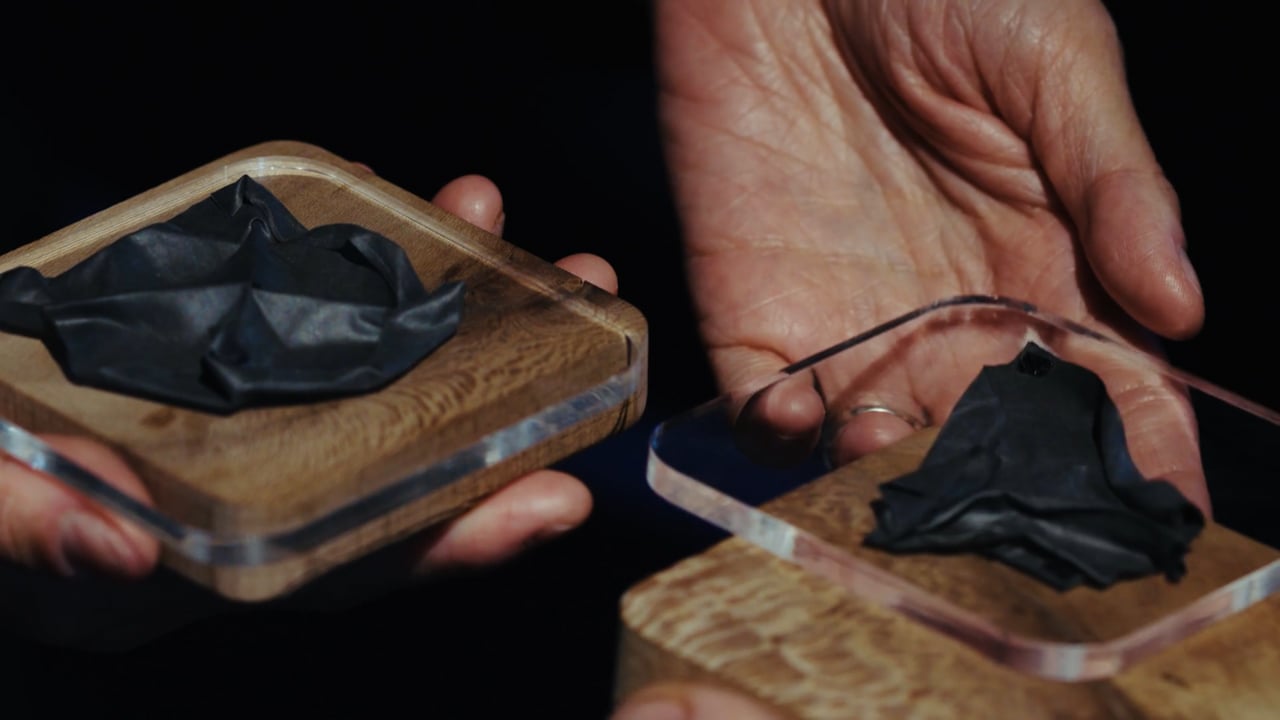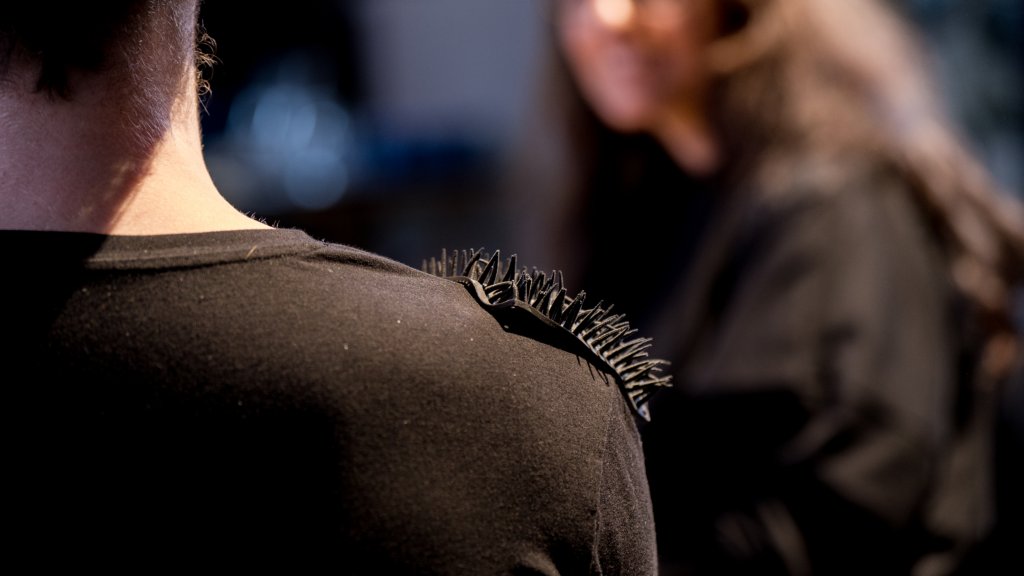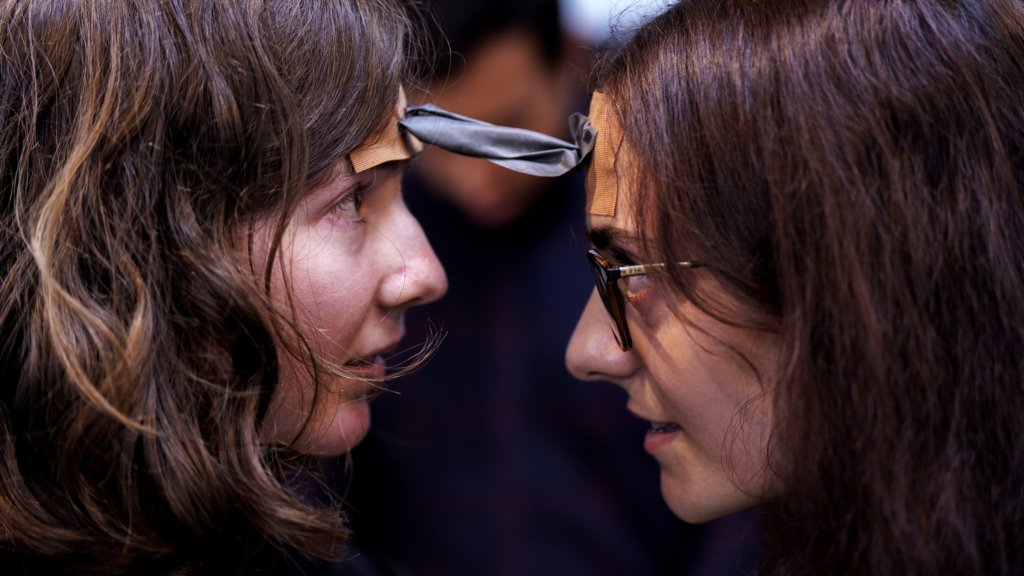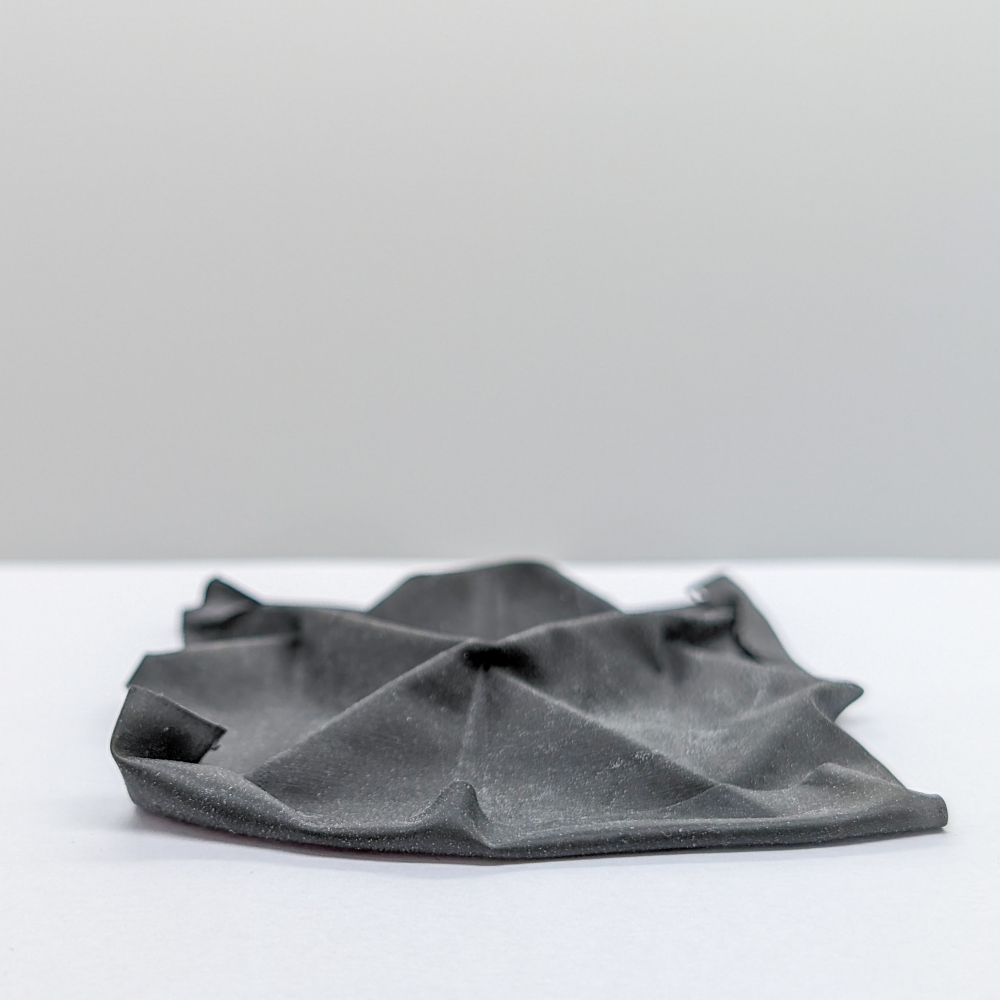Expressive Mechanisms: From Petri-dish to Performativity
Amy Winters, Amar Mohindra, Renzo Jansema, Venkat Kalpathy Venkiteswaran, Maaike Bleeker, Marco Rozendaal
Can we turn magnetic soft robots into performative experiences?

Imagine a world where materials and objects adapt and transform as if alive. In this realm, sensing, actuation, computation, and communication blend into ecologies of materials, artefacts, humans, and nonhumans. With Expressive Mechanisms, we explore how soft robotic technologies can animate expressive forms, creating novel interactions through a performative lens. Magnetic actuation lets objects shift with ethereal responsiveness, displaying lifelike behaviours. We challenge robotic design, exploring the boundaries between the familiar and the alien.
Soft robotics often centers on bio-inspired mechanisms like suction cups and grippers, typically developed in tech-centric environments such as labs and maker spaces. While these spaces facilitate material exploration, they can lack broader socio-cultural relevance. Bridging this gap involves integrating arts-based methodologies to create a new class of soft technologies, encouraging embodied and affective human engagement (Jørgensen, 2023).
Our interdisciplinary project combines biomechanical engineering, interaction design, and dramaturgy. From magnetic actuation research at UT, we developed interactive magnetic structures through a material-led approach at TU/e’s Material Aesthetics Lab, programmed with an impulse magnetizer at TU/e’s Electromechanics & Power Electronics. The project culminated in an experimental workshop on performativity and body-based interaction with the Dramaturgy for Devices project at Innovation:Lab, Theater Utrecht.

Our journey begins in the petri dish, where ferromagnetic particles are embedded into soft silicon structures (Venkiteswaran et al., 2020). Shape-programmable magnetic soft materials offer an untethered, precisely programmable, controllable alternative to conventional soft robotics actuators. Magnetic actuation allows objects to move, shift, and transform with a seemingly ethereal responsiveness.
This material exploration continues in the maker space, where we bridge the gap from lab-based experimentation to performativity, transforming these soft technologies into a library of tools for embodied and interactive experiences.
This transition bridges scientific inquiry with material-led, body-based experimentation, emphasizing how these magnetic forms can animate expressive and responsive interactions. By integrating the lab, maker space, and theatre studio, we collaboratively explore the potential for these soft robotic technologies to evolve beyond technical functionalities, becoming tools for immersive, affective human engagement.

As robots increasingly permeate our living environments, soft magnetic forms challenge conventional robotic design, offering immersive experiences that engage users with otherness—an encounter with the familiar and the alien (Boer and Bewley, 2018). During the workshop, participants engaged with magnetic activator-actuator props, assembling and co-creating narratives through speculative enactments. We introduced concepts from dramaturgy as a lens for reflecting on these enactments, sharing insights, and discussing their broader implications. Through this creative exploration, we aim to foster a deeper understanding of how soft robotic systems can enrich our everyday lives, moving beyond utility to cultivate more expressive, embodied forms of interaction. While promising, these experiments face challenges in scalability and require specialized environments for magnetic interactions.
Grounded in performative new materialist perspectives (Barad, 2007; Gemeinboeck, 2021), this hands-on experience invites the audience to re-think soft robots not simply as functional tools but as relational and performative materials.

Special thanks to the Dramaturgy for Devices project, Innovation:Lab Theater Utrecht, and workshop participants Anita Vrins, Enne Lamp, Nefeli Kousi, Pascalle Paumen, Soyun Jang, and Tessa van Abkoude.
Special thanks to Bert Kuijpers, Matthijs Kleijer at Electromechanics & Power Electronics (EPE), TU/e.
Share
Contacts
- -
- -
- -
- -
- -
- -


